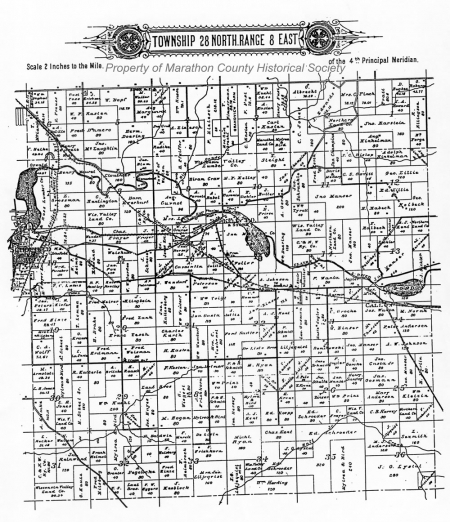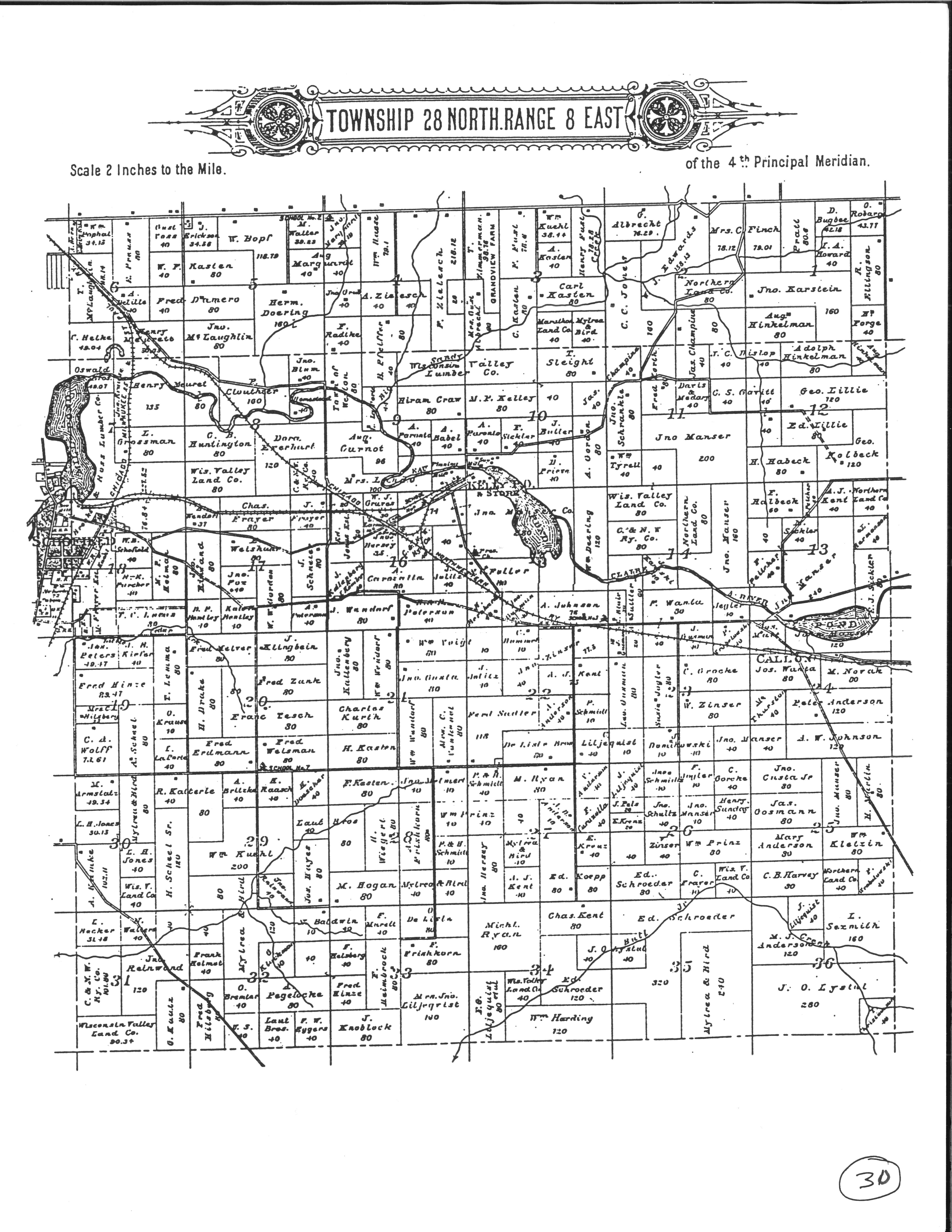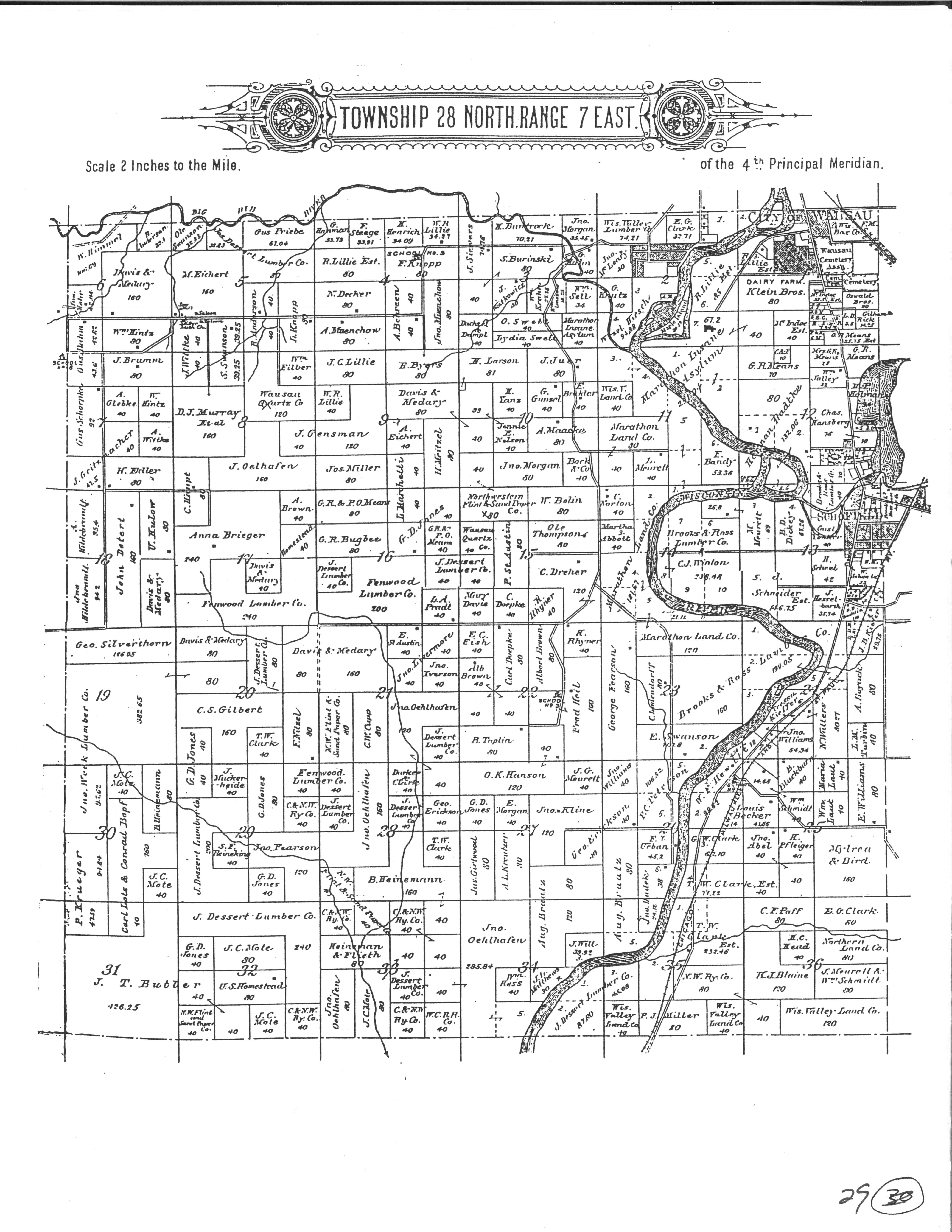Search our Places Database
Weston, Township of
Return To List of Locations | Back to Search
For more information on this location, please contact our research library.

Author:
Mary Moltzan
Location:
T. 28 N. - R. 7 E., east of Wisconsin River & T. 28 N. - R. 8 E.
Founded:
1856
Formallized:
February 12, 1859
Background:
Population: 1905-1,042 plus 744 Village of Schofield, 2000-514 plus 2,117 City of Schofield plus 12,079 Village of Weston.
Weston Township was created from mostly Eau Claire Township in 1859. Possibly the name originated with Charles Weston who built a sawmill in the town. He later moved from the area never to be heard from again. In 1860, Range 10 was added to the township's area. As a result, Weston Township covered most of southeastern Marathon County. After several townships were formed out of Weston, the township reached its present size in 1905.
The Town of Weston was heavily timbered, for the most part, when the white man first came to Wisconsin. Early activity was devoted almost exclusively to the taking of furs, which included trading with the Native Americans in the area. By the 1800s , a number of trappers and other explorers found the (now) Town of Weston to be rich in timber and eventually farming possibilities.
By 1836, a treaty was signed with the Menomonee Indians giving the white men a six mile wide strip along the Wisconsin River as far north as Big Bull Falls (now Wausau). It was not until 1839 that Marathon County was "invaded" by lumberman. The first logs were run down the Eau Claire and Wisconsin rivers in 1841 by Hiram Stowe. The first camp was started by Orlan Rood the following year.
Many mills began and continued being built. Logging in forests abounded and settlers came. The first road request on April 9, 1859 was a sign of early progress.
See City of Wausau
First Public Official:
Milo Kelly, Chairman
Biography:
Milo Kelly was the owner of Kelly's Mills, located in Kelly. He marked out the area for his mill in 1850. With his death in 1870, ownership of the mill passed to his sons, Nathaniel and William.
(See Village of Kelly)
Post Office Established:
See villages of Kelly, Rothschild, and Schofield
About The Post Office:
See villages of Rothschild, Schofield, and Kelly
Railroad:
The Wisconsin Valley Railroad (later the Milwaukee Railroad) came to Weston and Wausau in 1874. In 1881, the WVR extended its line north to Merrill and later to Star Lake in Vilas County. In 1890, the Milwaukee, Lake Shore and Western (C&NW) built a line that came through the township and on to Marshfield. With the coming of the railroads, lumber rafting nearly ceased and railroads took on the heavy hauling.
Churches:
See villages of Callon, Kelly, Rothschild, Schofield
Schools:
Per 1901 Marathon County Plat Book:
1. School #2, Section 4.
2. School #?, Section 16.
3. School #7, Section 15.
4. Also listed as School #7, Section 20, Weston School.
According to Marchetti's book, in 1913 there were five school districts in this town with as many schoolhouses. The village of Rothschild and a part of the Town of Flieth formed a joint school district, with the schoolhouse in the village. The children from the Town of Flieth crossed the Wisconsin River on the dam which formed a bridge. The solid brick school, costing $10,000, was a state graded school having four departments.
Other later schools are listed as:
1. District #1, Upper Kelly School, Section 9
2. Kelly Lower School, Section 14
3. District #2, Hawthorn School, Section 1
4. Town Line School, Section 4
Business:
See villages of Rothschild, Kelly, and Schofield
Industry:
Logging and Sawmills - White and Norway pines were logged as well as hemlock, cut for the bark which was cooked and used in leather tanning. Early common laborers were paid $16.00/month (usually with pay in lumber) and board (keep). They were paid in lumber at the rate of $5.00/thousand board feet. Payment came in the spring as money was scarce before lumber could be shipped. Accounts of log running and timber rafts on the Eau Claire claim that drownings were fairly common among lumberjacks. It was a dangerous occupation.
The first paper mill was started in Rothschild in 1909.
See villages of Rothschild, Callon, Kelly, and Schofield
Farming:
Farming became more common as the timber ran out in the early 1900s. The sandy soil was good for potatoes. Corn was planted, cut, and put into siloes for cattle feed. Stock raising was profitable.
Stories:
The lumberjack's food supply was very limited. According to one man, when he helped build the mill at the mouth of Pine River, the crew of six men lived all winter on some peas and one ox who had died from sickness. The ox's frozen carcus furnished them meals. Potatoes were a rarity. Salt pork furnished the standard meal. The men had no time to hunt, but fishing provided some variety in the food supply. Catfish, up to 15 pounds, could be caught. There was no milk.
J. L. Moore, running the Plumer Mill in 1852, brought up a barrel of mashed potatoes from Belvidere, Illinois, which was salted to preserve it. This food was hailed with delight.
A few years later when W. D. McIndoe had taken up his residence with his young wife he bought two cows. Another was owned by Dr. Scholfield, and these animals constituted the whole milk supply for Wausau and Schofield.





